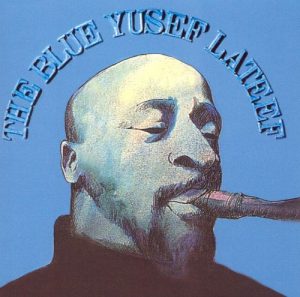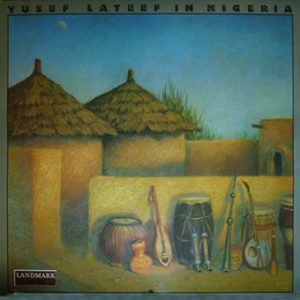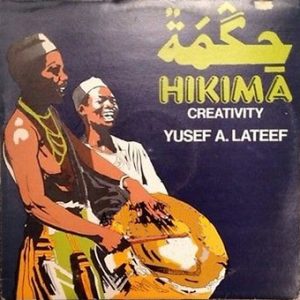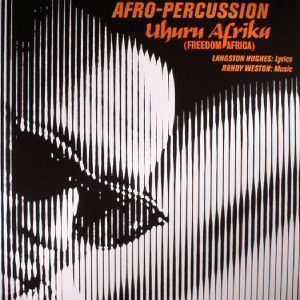by Yinka Elujoba
One evening, while escaping the rain on campus in Ife, I stopped for cover under the walkway beneath the Senate Building. Standing there was a girl in a blue hijab. Her phone rang.
I thought I recognised the ringtone: it was Trane of course. It had to be Trane – the tremor in the sax just after a burst of clarity, the hoarse abruption to a conspired melody. I assumed I’d heard what sounded like the beginnings of Aisha, but it didn’t quite sound all the way like Trane; a throaty, fluty interruption was peeking beneath the tenor.
All jazz lovers nurture an insurmountable mass of ego. I asked her, promptly, letting off as little of my ignorance as possible:
—What Coltrane is this?
She eyed me. A thing wet around her eyes, like water from the evening rain. Lateef, she said, an incurable emphasis on both syllables: Lah-teef.
 Later, after I’d spent time properly cutting my teeth on Lateef, I thought that Juba Juba was an embodiment of what he’d hoped to become. It was from The Blue Yusef Lateef – an album that heralded what was possible with experimentation in the 1960s. Tom Jurek described it as “blues you can dance to, but also meditate to and marvel at; a pearl worthy of the price.”
Later, after I’d spent time properly cutting my teeth on Lateef, I thought that Juba Juba was an embodiment of what he’d hoped to become. It was from The Blue Yusef Lateef – an album that heralded what was possible with experimentation in the 1960s. Tom Jurek described it as “blues you can dance to, but also meditate to and marvel at; a pearl worthy of the price.”
Jazz – a term Lateef consistently found annoying – is, of course, heavily characterised by improvisations. Before Juba Juba, Lateef had experimented with Eastern and Middle Eastern instruments. In The Plum Blossom for example, he spends the first two minutes with a silently energetic play on the xun, catching short spans of breath in between. No other jazz musician likely devoted so much time and scholarship to learning, improvising and innovating with instruments from different cultures. Lateef”s mantra was from one of Prophet Muhammad’s hadiths: “Seek knowledge from the cradle to the grave. Seek knowledge even though it be in China.”
In 1980, the Centre for Nigerian Cultural Studies invited Lateef to be a senior researcher at Ahmadu Bello University (ABU) in Zaria. In August 1981, after finishing The Tahira Symphony and losing interest in Europe, Lateef and his family moved to Zaria in Nigeria for four years. There he had three principal tasks: to conduct research on the origin, use and functions of the sarewa, a Fulani flute; to interact and work with performing artists – dramatists, dancers and musicians; and, finally, to teach research methodology.
The sarewa, Lateef’s object of research, is a small wooden flute, about 30 to 40 cm in length and about 2 cm in diameter, crafted from the pagoda tree by Fulani herdsmen. It has four fingering holes and is blown from an end. The sarewa’s range exceeds that of a Germanic C-flute by a fourth. Lateef found it impressive and instructive how the Fulani herdsmen could fashion one in as little as 10 minutes.
 Lateef quickly learned that in most parts of Nigeria, music existed for far more existential reasons than entertainment. For the Fulani, the sarewa represented an entry point into folk medicine, and into marriage, rituals, royalty. He stumbled onto popular Fulani culture, of how a Fulani man would only be permitted to marry a woman he desired if he could withstand, without whimpering or snivelling, a certain number of lashes from a whip. But he also encountered lesser known details, like how, in some historical occasions, music began first with dancing. Salisu, a master drummer from Katsina that Lateef worked with, told him how his first teacher refused to give him a drum until he had first learnt to dance.
Lateef quickly learned that in most parts of Nigeria, music existed for far more existential reasons than entertainment. For the Fulani, the sarewa represented an entry point into folk medicine, and into marriage, rituals, royalty. He stumbled onto popular Fulani culture, of how a Fulani man would only be permitted to marry a woman he desired if he could withstand, without whimpering or snivelling, a certain number of lashes from a whip. But he also encountered lesser known details, like how, in some historical occasions, music began first with dancing. Salisu, a master drummer from Katsina that Lateef worked with, told him how his first teacher refused to give him a drum until he had first learnt to dance.
It is well known, that on leaving Nigeria in 1985, Lateef released Yusef Lateef in Nigeria, an album considered to be the epitome of his learning there. Lateef had originally recorded, for the Centre for Nigerian Cultural Studies, Hikima – Hausa for “knowledge” (from Arabic “hikmah”) and arguably the album that is the most difficult to find. It was on this album that the Yusef Lateef in Nigeria album was predicated.
What was Hikima like?
 It certainly was not the first attempt at mixing jazz and highlife music – one of the earliest highlife bands in Ghana, in fact, named themselves Jazz Kings. Three years before Lateef’s Hikima, the great saxophonist, Pharaoh Sanders, released Rejoice!, on which the third track was named “Nigerian Juju Hilife”. Yet, when I heard it, I thought that Sanders’s attempt paled in comparison. Lateef’s Hikima is immediately wayward, frenetic, radical, the kind of highlife you want to march to. But this is perhaps an unfair comparison. For, at his disposal, Lateef had immeasurable access to a repertoire of resources, talents and experiences, unavailable to Sanders. But to judge the album with this eye alone is to deny Lateef the credit that is due to him: the man was simply inimitable in his hunger for improvisation.
It certainly was not the first attempt at mixing jazz and highlife music – one of the earliest highlife bands in Ghana, in fact, named themselves Jazz Kings. Three years before Lateef’s Hikima, the great saxophonist, Pharaoh Sanders, released Rejoice!, on which the third track was named “Nigerian Juju Hilife”. Yet, when I heard it, I thought that Sanders’s attempt paled in comparison. Lateef’s Hikima is immediately wayward, frenetic, radical, the kind of highlife you want to march to. But this is perhaps an unfair comparison. For, at his disposal, Lateef had immeasurable access to a repertoire of resources, talents and experiences, unavailable to Sanders. But to judge the album with this eye alone is to deny Lateef the credit that is due to him: the man was simply inimitable in his hunger for improvisation.
One of Lateef’s greatest moments in Nigeria was being a music consultant for Mallam Umar B. Ahmed’s theatre production, Amina. Lateef created instruments to be used to produce special sound effects for the play. In Amina, the titular queen is supposed to be stabbed and then die. Afterwards, there would be a chorus – like something out of a Greek drama – and Lateef was tasked with orchestrating minor chords for the singers. During the rehearsals, he noticed that the singers were changing the minor chords to chordal chords. Lateef figured that the singers did this intuitively – it was their innate way of expressing sadness. He realised, from this experience, that form wasn’t something that was set – it was intuitive. He, in turn, began to write songs that were not 8/8, 16/8, but nine measures long, 13 measures long. Gradually, he discarded the standard functionality of chord changes. This experience laid the ground for what Lateef would later call “endophyte composition”.
The 1970s were the golden years for university education in Nigeria. Indigenous universities – including ABU – were already in existence, but were thrown into chaos during the 1960s civil war. The oil boom at the time – especially the dramatic rise in oil prices in 1974 – caused an unprecedented flow of wealth into Nigeria. The country rushed to put the civil war behind it, trying hard to foster peace and unity among its regions. The Centre for Nigerian Cultural Studies, too, was not the first of its kind. In Ife, the Institute of African Studies (later the Institute of Cultural Studies) had already been established in 1962. Michael Crowder launched the Ife Festival of the Arts and after he left in 1971, Ulli Beier, became director of the institute. After Crowder left Ife, he went to Zaria and started the Centre for Nigerian Cultural Studies. Dexter Lynderson, Duro Oni and Peter Badejo – who eventually played percussion on the Yusef Lateef in Nigeria record – were among the first staff of the institute.
 Lateef’s contact with African music began before he came to Zaria. In 1960, he joined a group led by Babatunde Olatunji, the Nigerian percussionist whose work Lateef described as “world music”. It was also in 1960 that Randy Weston and Langston Hughes visited Lagos. After their return to the USA, they released Uhuru Afrika, with Lateef on tenor, flute and oboe. Later, between 1975 and 1980, Lateef travelled widely, including to Tunisia, Egypt and Ghana.
Lateef’s contact with African music began before he came to Zaria. In 1960, he joined a group led by Babatunde Olatunji, the Nigerian percussionist whose work Lateef described as “world music”. It was also in 1960 that Randy Weston and Langston Hughes visited Lagos. After their return to the USA, they released Uhuru Afrika, with Lateef on tenor, flute and oboe. Later, between 1975 and 1980, Lateef travelled widely, including to Tunisia, Egypt and Ghana.
Thirty-two years after Lateef left, I visited Zaria and its ancient city. In recent times its walls had been remodelled, but when Lateef lived there, he would have seen the original walls – total in their detailing. I wondered if he visited the old Zaria city. What did he think of the impressive mud architecture? Did he ever come here to consult or draw inspiration? I sat for a long time, speaking with a man who was now a chief, the city’s royal architect. I asked him how old he was. He said he had never thought of it. I asked him if he could tell me what kind of music was available in the 1980s, hoping to get a glimpse of what Lateef would have had access to. He laughed and said the only thing he was sure of was that the city has never lacked gourds and flutes.
Today, the Centre for Nigerian Cultural Studies, as with most good things in Nigeria, no longer exists having been absorbed into other departments at ABU. While I was in Zaria, I visited the campus. I walked to the Drama Village, where Ahmed’s Amina had been performed. The Drama Village is almost a replica of a compound inside the Gidan Makanma – a 500-year-old museum in Kano. I stood in the hollow centre of the Drama Village and allowed myself to enjoy a rush of nostalgia, until suddenly, in a moment that passed before I grasped it, I thought I saw Lateef sitting at the foot of one of the mud houses, dressed in his long flowing robe, a sarewa in his hand.
When asked how he would describe his experience in Nigeria, Lateef said: “Since my return from Nigeria, I have been experiencing an ongoing dialectic reality in my approach to melody, rhythm, harmony, form, and aesthetics. To explain this in writing would take nothing less than an exposition. Therefore, in the absence of time to write an exposition, I suggest that you listen to the music I have produced since I returned from Nigeria”.

This and other stories available in the new issue of the Chronic, “The Invention of Zimbabwe”, which writes Zimbabwe beyond white fears and the Africa-South conundrum.
The accompanying books magazine, XIBAARU TEERE YI (Chronic Books in Wolof) asks the urgent question: What can African Writers Learn from Cheikh Anta Diop?
To purchase in print or as a PDF head to our online shop, or get copies from your nearest dealer.
